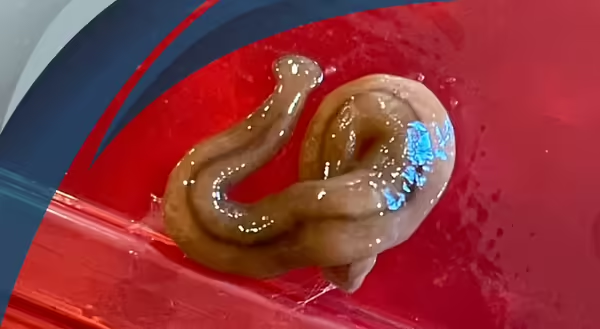
While you may be familiar with many invasive plants and insects, the hammerhead worm is perhaps one of the strangest and least well-known invaders to our gardens.
History
According to the USDA, hammerhead worms were probably introduced to the U.S. in 1891 from southeast Asia. First reported in Urbana, Ill., in 1997, and subsequently in several northern Illinois counties, hammerhead worms (Bipalium adventitium) are worm-like planarians that live in moist areas.
Their most distinctive feature is the flattened shovel-shaped head and stripes running down the body. In fact the genus name, “Bipalium” comes from the Latin words “bi-" or “two” and “pala” meaning “shovel,” since the head resembles a pickaxe. As they require moist conditions, they are frequently found under rocks and logs, in leaf litter, or in mulch. They eat other invertebrates, such as earthworms, slugs, isopods (rolly pollies), and other insect larvae. They are able to track their prey, gliding with a movement similar to snakes. They then capture their prey, wrapping their bodies around it, using a slimy mucus that contains tetrodotoxin, the same toxic substance found in the blue-ringed octopus and pufferfish, to prevent them from escaping. Additionally, due to the presence of this toxin, care should be taken when handling them. Pets should also not eat them.
One method of reproduction for hammerhead worms is by breaking off a small section of their body near the tail. This segment will quickly begin developing a head and start moving. It is believed that this is part of the reason they can quickly become abundant in an area. If they are cut in half, they will just turn into two individuals, making eradication tricky.
Protection against hammerhead worms
To prevent the spread of hammerhead worms in your yard, follow good horticultural practices.
- Garden amendments such as mulch and compost should be purchased from a reputable source.
- Sanitize tools after use.
- Purchase high quality plants from reputable nurseries.
- Beware of plant material shared from neighbors and friends. This can prevent the introduction of unwanted guests to your yard, also including jumping worms and disease.
Eradication of hammerhead worms is difficult. As mentioned previously, cutting worms can cause them to multiply. Worms should be put in a container with either rubbing alcohol or vinegar and ideally frozen. Salt can be applied in areas of infestation, but can also damage plants and soils, so use sparingly.
Potential Benefit?
There is a children’s song about an old lady who swallowed a fly. She then goes on to swallow a spider to catch the fly. This is followed by a whole menagerie of other animals, each to catch the previous one. In a similar vein, while hammerhead worms are considered invasive and are definitely not a welcome addition to your yard, they might have a small benefit: their list of prey includes the dreaded invasive jumping worm.
For more information on invasive species in our area, check out the University of Illinois Extension’s Invasive Species website. Also, check out the University of Illinois Extension Horticulture YouTube Channel for videos on other horticulture topics.